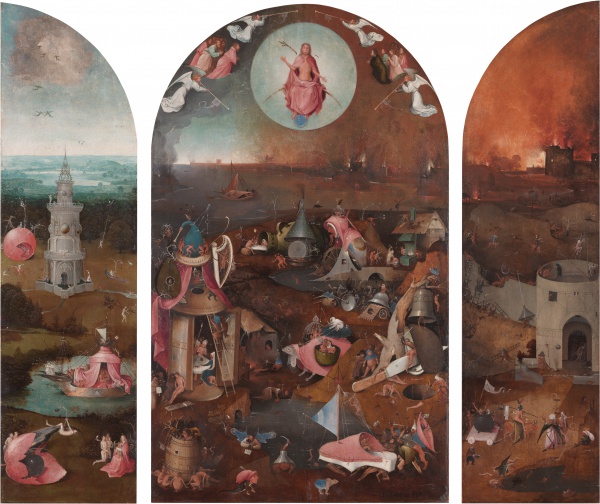Facts About The Last Judgment
"The Last Judgment" is a captivating triptych often attributed to Hieronymus Bosch, his workshop, or possibly a collaboration between the two. Created sometime after 1486, this intriguing piece is currently displayed at the Groeningemuseum in Bruges, Belgium. The exterior shutters are adorned with grisaille paintings, while the interior shutters and central panel are crafted with oil on panel.
The artwork's provenance includes notable ownership by E. Gravet and Seligman in Paris before it was acquired by A. Bernaert, who generously donated it to Bruges. The triptych was cleaned in 1936 and underwent restoration in 1959, which unveiled the grisaille paintings on the external shutters. Regrettably, the painting above the internal frames has been lost over time. Questions about the artwork's attribution arise due to its perceived mediocre quality, with dendrochronological analysis pinpointing its creation to post-1486.
The composition of "The Last Judgment" shares a striking resemblance to Bosch's other works, such as "The Garden of Earthly Delights." The left panel illustrates the Garden of Eden, while Hell is depicted on the right panel. The exterior shutters, painted in grisaille, feature a "Crowning with Thorns." The central panel is a dramatic portrayal of Christ as the judge, surrounded by angels blowing the Trumpets of the Last Judgment and the apostles. Below Christ, sinners are subjected to punishment, which continues into Hell depicted on the right. The left panel showcases Paradise, where blessed souls are seen sailing towards Eden on a boat.
The central panel is dominated by insect-like demons tormenting individuals, reflecting themes from Netherlandish Proverbs. The infernal city on the right is under siege by demons, with a distant fire burning in the background, adding to the overall ominous atmosphere of the scene.

 Netherlands
Netherlands